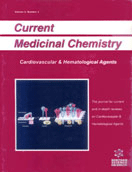Abstract
Dyslipidemia, fundamental to the atherosclerotic process, is now a readily correctable risk factor with established efficacy of treatment for reducing risk of CHD and strokes. The current focus on LDL-cholesterol for risk assessment needs to be broadened to accommodate the two-way traffic of cholesterol entering and leaving the arterial intima reflected by the LDL/HDL ratio or the Total/HDL ratio. The choice of lipid therapy should be individualized to take into account the presence of the metabolic syndrome and the lipid profile of the patient. The intensity of therapy and goals should be linked to multivariable risk, particularly in those with modest lipid values. Cardiovascular risk factor clustering is pronounced for each lipid, is promoted by adiposity and greatly influences its CHD hazard. Global risk assessment taking clustering into account is essential for efficient preventive management of lipids. More attention needs to be afforded the absolute risk reduction attainable and must recognize that the number needed to treat to prevent one event increases the lower the lipid value, the lower global risk and the healthier the subject.
Keywords: lipids, dyslipidemia, risk, risk stratification
 3
3













